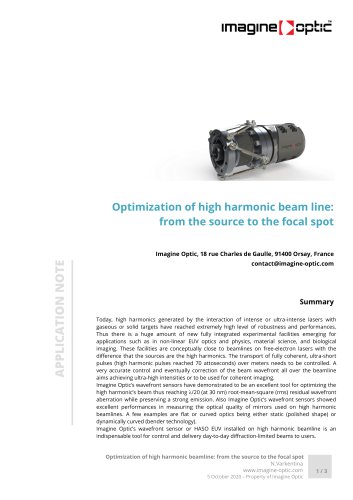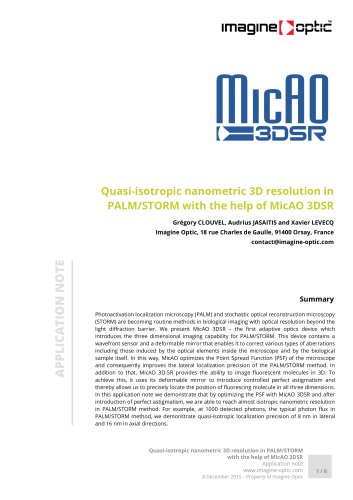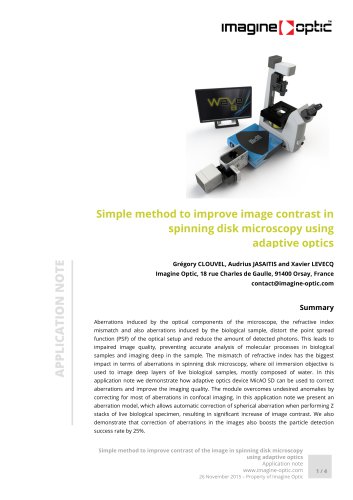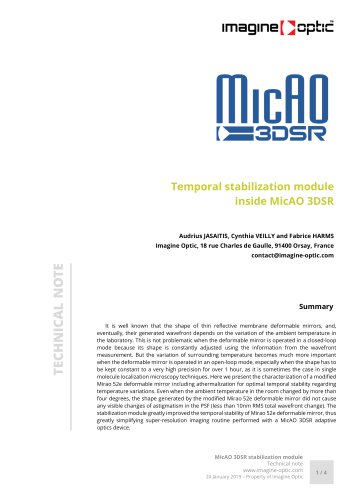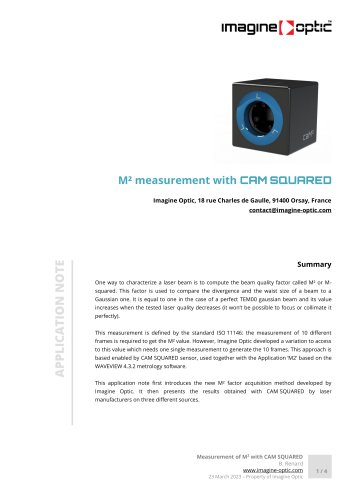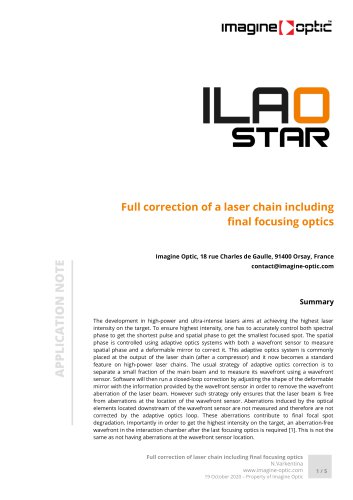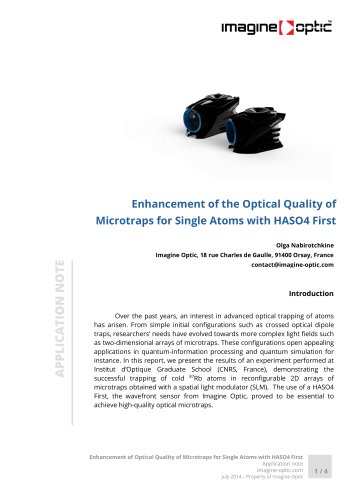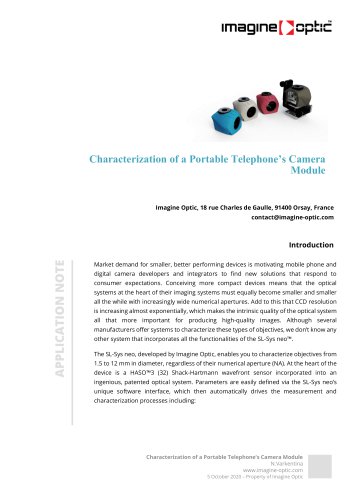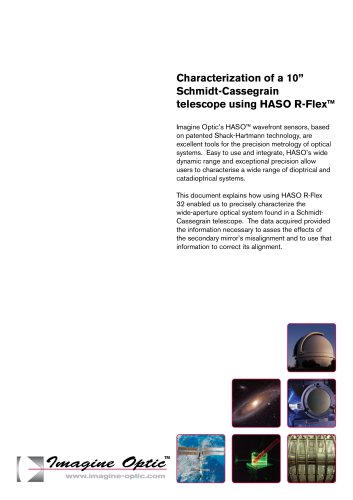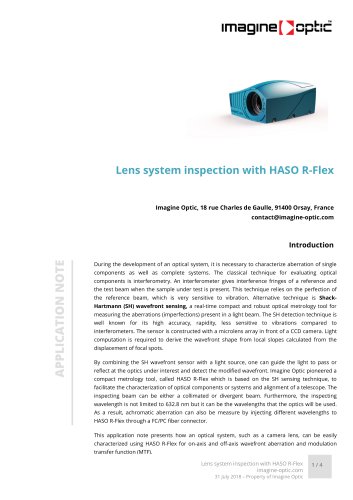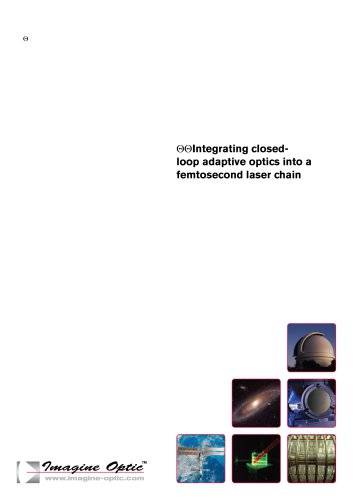
Catalog excerpts
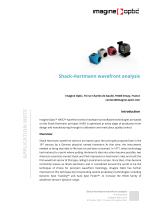
Shack-Hartmann wavefront analysis Imagine Optic, 18 rue Charles de Gaulle, 91400 Orsay, France contact@imagine-optic.com Introduction Imagine Optic™ HASO™ wavefront sensor hardware and software technologies are based on the Shack-Hartmann principal. HASO is optimized at every stage of production from design and manufacturing through to calibration and meticulous quality control. Overview Shack-Hartmann wavefront sensors are based upon the principals proposed late in the 19th century by a German physicist named Hartmann. At that time, the instruments needed to bring that idea to life had not yet been conceived. In 1971, when technology had matured to a point where putting Hartmann’s idea into action became possible, two American scientists named Shack and Platt improved on Hartmann’s idea and built the first wavefront sensor of this type, calling it a Hartmann-screen. Since then, it has become commonly known as Shack-Hartmann and is considered around the world to be the technique of choice for precision wavefront metrology. Imagine Optic has further improved on this technique by incorporating several proprietary technologies, including Dynamic Spot Tracking™ and Auto Spot Finder™, to increase the HASO family of wavefront sensors’ dynamic range. Shack-Hartmann wavefront analysis N.Varkentina imagine-optic.com 6 October 2020 – Property of
Open the catalog to page 1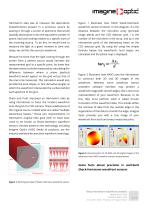
Hartmann’s idea was to measure the aberrations Figure 1 illustrates how HASO Shack-Hartmann (imperfections) present in a luminous source by wavefront sensors function. In this diagram, d is the passing it through a screen of apertures that would distance between the microlens array (principal spatially decompose it into the equivalent number of image plane) and the CCD detector grid, i is the points, each point being relative to a specific zone of number of the microlens in the array, and ∆x is the the incoming source. To do this, he would have to intersection point of the elementary beam...
Open the catalog to page 2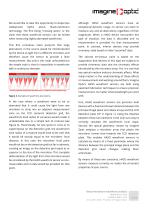
We would like to take this opportunity to dispel two exceptional dynamic range, no sensor can claim to technology. The first being “crossing spots,” or the measure any and all aberrations regardless of their claim that these wavefront sensors can be misled magnitude. When a HASO device encounters this when measuring highly aberrated wavefronts. type of situation, the data is discarded and no This first erroneous claim purports that large aberrations in the source would be misinterpreted by the device as light from a different microlens and measurement is provided for that measurement point....
Open the catalog to page 3
In short, HASO Shack-Hartmann wavefront sensors are the most reliable means of using wavefront sensing and analysis to achieve precision results every time you use them – even on the most highly aberrated, convergent or divergent beams. Key HASO technology features • • • • • • Design optimization using wave propagation and signal detection modeling High-quality microlens array Ultra-precise coupling between camera and microlens array Robust bulk mechanical assembly Wide-range spot detection algorithms Rigorous calibration and test procedure For more information, and to find the Imagine...
Open the catalog to page 4All Imagine Optic catalogs and technical brochures
-
WAVE Suite
3 Pages
Archived catalogs
-
Microtraps
4 Pages
-
AO inside laser chain
5 Pages
-
AO in femtosecond laser
5 Pages
-
Large deformable mirror ILAO
6 Pages
-
NIR optics characterization
6 Pages
-
Telescope characterization
3 Pages
-
absolute measurement
4 Pages
-
HASO R.FLEX
4 Pages
-
HASO3
2 Pages
-
bendAO?
3 Pages
-
HASO?3 WSR Wavefront Sensors
2 Pages
-
HASO R-Flex
3 Pages
-
SL-Sys LIQUID
2 Pages
-
SL-Sys neo
2 Pages
-
HASO™3 Wavefront Sensors
3 Pages


